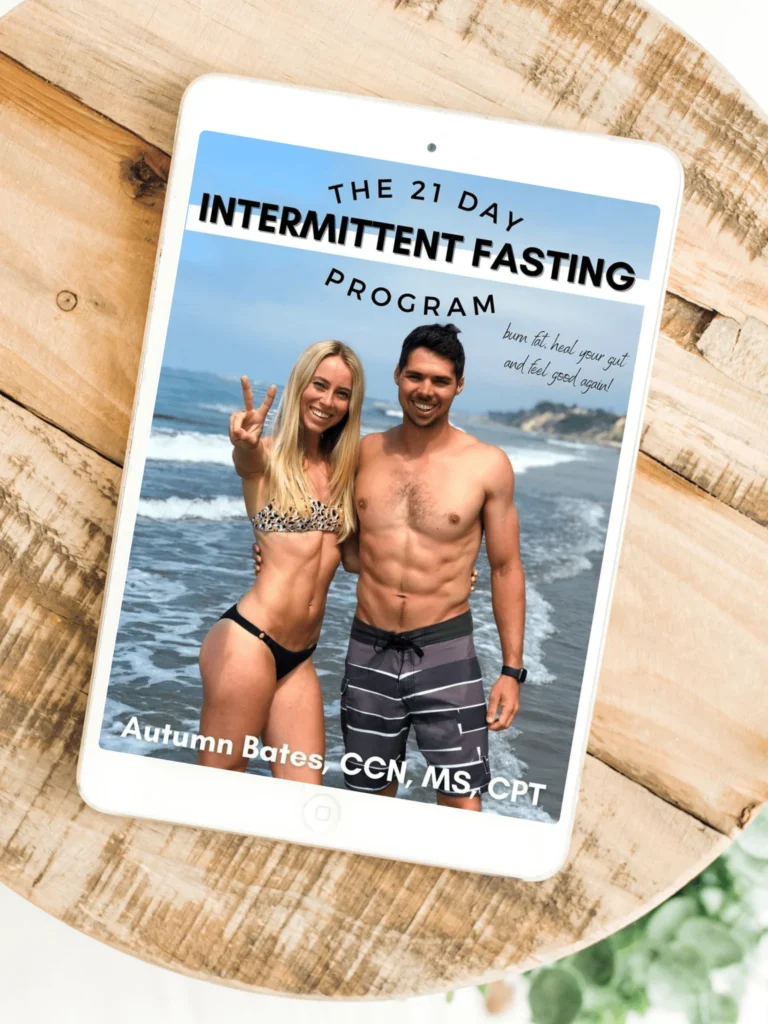These are the 10 most effective ways to lose fat fast and transform your body. Here’s what you need to know.
If you’re looking to achieve a weight loss or body recomposition goal, then you want to make sure you’re using the right tools that will actually help you see the results that you’re looking to achieve. And it turns out, simply eating less and moving more will not help you achieve those goals.
However, there are simple tools that can help you to visibly see body recomposition and fat loss changes. These are tools that when done together help to reduce body fat, maintain muscle mass, and keep the metabolism high, all without feeling hungry or counting calories.
Let’s dive into it.

1. Eat Low Glycemic Load Carbs
The glycemic load is a measurement of how quickly a carb containing food raises blood sugar. If something is high glycemic load, then it really quickly raises blood sugar. If it’s low glycemic load then it has minimal or zero impact on blood sugar.
Foods that are low glycemic load are typically packed with micronutrients to nourish the body. From a weight loss perspective, low glycemic load foods also tend to be the least addictive and therefore are the least likely to cause us to overeat.
On the flip side, high glycemic load foods tend to quickly spike blood sugar and lead to a blood sugar crash. Blood sugar crashes make us feel very hungry and crave sugary starchy foods that work against a weight loss goal.
Get a full list of low, medium and high glycemic load foods HERE.
2. Walk 10,000 Steps Per Day
There’s nothing magical about 10,000 steps per day specifically. But it is a lot more than the 4,000 or so steps per day that most people are getting on average. Plus, if you can take your walk outside, studies have found that this helps to reduce the stress hormone cortisol. High levels of cortisol have been tied to weight gain around the belly.(1)
Related Reading: My Free 28 Day Walking Plan
3. eTRF Intermittent Fasting
Intermittent Fasting can be a great tool for helping the body become more metabolically flexible, which can be helpful for more easily burning fat as fuel. But specifically a form of Intermittent Fasting called eTRF (early time restricted feeding) has been found to be the best.(2)
To practice eTRF, you would pick your “eating window” to start and end earlier in the day. For example, you would break your fast at 8am and start your fast again at 6pm (for a 14 hour fast) as opposed to breaking the fast later in the day (such as 12pm).
Related: The Complete Intermittent Fasting Bundle

Tap into fat burning
The 21 Day Intermittent Fasting Program
The 21 Day Intermittent Fasting Program provides step-by-step strategies to help you use Intermittent Fasting with delicious, protein-packed meals to support fat loss, reduce hunger, and boost gut health.
4. Remove All Sweetened Drinks
Obviously we know that soda isn’t helpful for weight loss goals, but it’s important to keep an eye out for other sugary drinks like fruit juices.
Fruit juices still contain a fair amount of sugar and a lot of that sugar is in the form called fructose. Fructose in larger amounts has been specifically tied to fatty liver and insulin resistance.(3)
5. 8 Hours of Balanced Sleep Every Night
Poor sleep is directly tied to weight gain around the belly. But poor sleep has also been found to change our food preferences to more sugary, starchy foods that work against a weight loss goal.
Some of my favorite and most effective tools for improving my sleep quality has been incorporating a magnesium supplement, setting a bedtime (and sticking to it), being active throughout the day and not using my phone/tv/laptop within 1 hour before I go to bed.
Protein waffles for a protein, fat and fiber rich brekky!
6. Have Meals, Not Snacks
When looking to achieve a weight loss goal, it’s important to reduce hunger so that we can reduce sugar cravings. And interestingly, studies have found that having 6 small meals actually makes us more hungry than 3 larger meals.(4)
But it’s important to do these meals right. A lot of people under-eat at their meals, making it impossible to stick to a 3 meal structure.
You can grab the details for how to optimize meals to help support a weight loss goal with the Complete Intermittent Fasting Bundle HERE.
7. Don’t Count Calories
Whenever I see a client start to count calories, they reduce everything. This includes sources of carbs, fat, fiber and protein.
In order to maintain the metabolism, prevent hunger and stop muscle loss while losing weight, it’s crucial to be eating a certain amount of protein per day. This is likely why higher protein diets have been found to be best at helping to achieve a weight loss goal when compared to traditional calorie restriction protocols.(5)
But protein rich foods are also usually some of the highest calorie foods. So this means these important food sources for sustainable weight loss often get greatly cut down or reduced, when in reality they should probably be increased.
Plus, traditional calorie restriction that often results from counting calories can lead to significant loss in muscle mass.
This loss in muscle can result in a significantly slower metabolism, making weight loss harder and harder.
However, when muscle mass is maintained by shifting the focus to protein rather than calories, it helps to maintain metabolic health and make achieving a weight loss goal even easier.
8. Water, Coffee, Tea… That’s It
If you’re looking to jumpstart your journey and start seeing results faster during the first 30 days, then ideally it’s important to stick to water, coffee and tea.
Of course there are some add-ons that can still support a body recomposition goal, such as sparkling water, lemon juice, apple cider vinegar or half and half in coffee. But if you are used to consuming alcohol throughout the week, then cutting it out for 30 days can help make a tremendous leap forward in your progress.
9. 3-5 Days/Week of Resistance Training
Resistance training was a game changer for me during my 20 pound weight loss journey.
It’s also been a super important tool for others in my community as well. Just check out Kristen’s experience and how she was able to break through her weight loss plateau and lose an additional 15 pounds once she started resistance training HERE.
If you aren’t sure where to start, you can checkout the 21 Day Intermittent Fasting Program which includes a 3 week resistance training program.
10. 30 Grams Complete Protein Per Meal
As noted earlier, higher protein intakes have even been found to be better than traditional calorie restrictive diets when it comes to achieving a fat loss goal.
Some people need a bit more protein and others might not need as much. But 30 grams is a good place to start for a lot of people.
But getting this much protein can be quite tricky when you aren’t used to focusing on it. One of my favorite ways to start off on the right foot is by having homemade protein waffles.
These are simple to prep, packed with protein and taste SO DANG GOOD.
Kickstart Your Journey
Shop Autumn’s Whey Protein Powder
Our delish bestselling zero added sugar, gluten & heavy metal tested whey protein powder!
Studies
https://www.frontiersin.org/journals/public-health/articles/10.3389/fpubh.2019.00376/full
https://www.nature.com/articles/s41467-022-28662-5
















